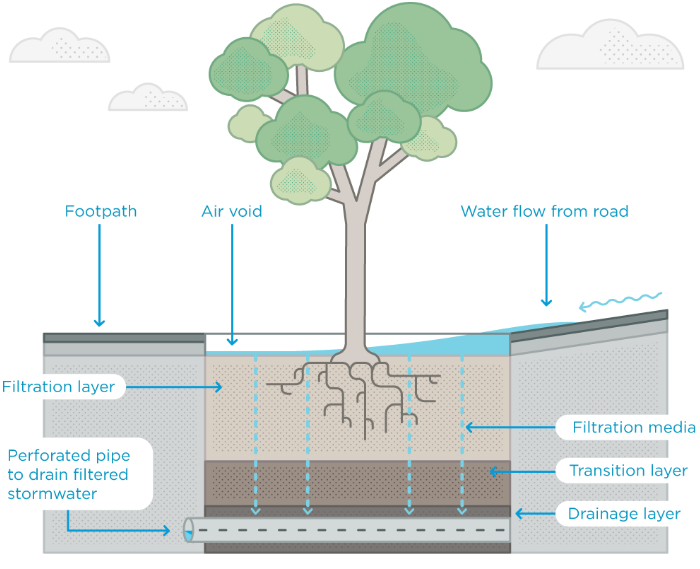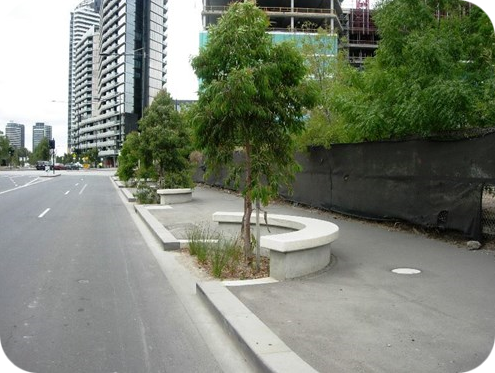Application: Aquifers, buildings, drainage, markets, roads and footpaths
Description: Stormwater tree pits are similar to traditional street tree pits except they are modified to have bigger growing space, are interconnected through an underground structure, collect and store stormwater in the empty spaces between the stones, and treat stormwater runoff using bioretention. Bioretention systems collect and filter stormwater through soils and plant roots, where pollutants are removed via filtration and absorption. The underground structure is a continuous soil trench underneath the pavement connecting individual tree pits to increase the benefits of the system. Treated stormwater is then slowly infiltrated into the ground or, if infiltration is not appropriate, discharged into a traditional stormwater drainage system.
Contribution to climate resilience: By reducing surface run-off, stormwater tree pits contribute to groundwater recharge and reduce flood flows. This approach ensures that there is more water in the aquifer for use in the dry season, increasing communities’ resilience to drought that are likely to get worse with climate change.
Supplementary sources of information:
http://www.phillywatersheds.org/what_were_doing/green_infrastructure/tools/stormwater_tree_trench
http://gievidencebase.botanicgardens.sa.gov.au/contents/7-water-management
Background image credit: https://www.sustainablehealthycities.org/research/urban-tree-pit-design-factors-for-stormwater-management/
This resilience-building measure is sourced from the Water Resource Adaptation Guide (2019) published by the National Council for Sustainable Development at the Ministry of Environment in Cambodia. The full Guide is available to download at URL https://ncsd.moe.gov.kh/sites/default/files/2019-10/Water%20Resources%20Adaptation%20Guide_March%202019_En.pdf


